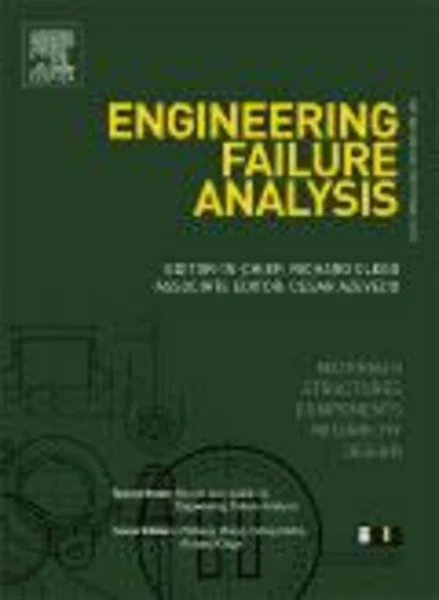-
failure analysis of a weld-decayed austenitic stainless steel
جزئیات بیشتر مقاله- تاریخ ارائه: 1390/01/01
- تاریخ انتشار در تی پی بین: 1390/01/01
- تعداد بازدید: 593
- تعداد پرسش و پاسخ ها: 0
- شماره تماس دبیرخانه رویداد: -
the best known weld-related corrosion problem in austenitic stainless steels is sensitization which is one of the major reasons for intergranular of austenitic stainless steels in weld haz, sometimes known as weld decay. it is also well known that chromium carbide completely dissolves in austenitic stainless steels at temperatures above 1035 c. however, when these steels are slowly cooled down from these high temperatures or reheated into the range of 425–815 c, chromium depletion due to the chromium carbides precipitation at grain boundaries will cause weld decay. welding process is one of the most conventional and common causes of the sensitization, as the heat caused by weld thermal cycle brings part of the haz into precipitation temperature range. the sensitization caused by chromium depletion during welding can not be prevented effectively only by some conventional approaches, e.g., solution treatment, reduction of carbon content and stabilization treatment, etc. more recently, kokawa et al. reported that they used a new approach to obtain grain boundary engineered materials by means of inducing twin grain boundaries which could suppress the weld decay of austenitic stainless steel effectively [6]. although weld decay has been widely studied, failures caused by it are still reported. the objective of this paper is to document an investigation of a failure case about weld decay in type aisi 202 stainless steel. it also discusses other potentially misleading causes.
مقالات جدیدترین رویدادها
-
استفاده از تحلیل اهمیت-عملکرد در ارائه الگوی مدیریت خلاقیت سازمانی و ارائه راهکار جهت بهبود
-
بررسی تاثیر ارزش وجوه نقد مازاد بر ساختار سرمایه شرکت های پذیرفته شده در بورس اوراق بهادار تهران
-
بررسی تأثیر سطح افشای ریسک بر قرارداد بدهی شرکت های پذیرفته شده در بورس اوراق بهادار تهران
-
بررسی تأثیر رتبه بندی اعتباری مبتنی بر مدل امتیاز بازار نوظهور بر نقد شوندگی سهام با تأکید بر خصوصی سازی شرکت ها
-
تأثیر آمیخته بازاریابی پوشاک ایرانی بر تصویر ذهنی مشتری پوشاک ایرانی (هاکوپیان)
-
بررسی اثربخشی آموزش مهارت های زندگی برطرحواره های هیجانی سالمندان
-
بررسی اثر شکل هندسی هسته در رفتار لرزه ای سدهای خاکی با هسته بتن آسفالتی
-
بررسی انتقادی نقش ها و طرح های گاو بالدارِ دروازه ملل تخت جمشید در سفرنامه های اروپاییانِ دوره صفویه و زندیه
-
unsupervised ensemble minority clustering
-
nighttime approaches to offshore installations in brazil: safety shortcomings experienced by helicopter pilots
مقالات جدیدترین ژورنال ها
-
مدیریت و بررسی افسردگی دانش آموزان دختر مقطع متوسطه دوم در دروان کرونا در شهرستان دزفول
-
مدیریت و بررسی خرد سیاسی در اندیشه ی فردوسی در ادب ایران
-
واکاوی و مدیریت توصیفی قلمدان(جاکلیدی)ضریح در موزه آستان قدس رضوی
-
بررسی تاثیر خلاقیت، دانش و انگیزه کارکنان بر پیشنهادات نوآورانه کارکنان ( مورد مطالعه: هتل های 3 و 4 ستاره استان کرمان)
-
بررسی تاثیر کیفیت سیستم های اطلاعاتی بر تصمیم گیری موفق در شرکتهای تولیدی استان اصفهان (مورد مطالعه: مدیران شرکتهای تولیدی استان اصفهان)
-
اثربخشی آموزش مدیریت استرس بر بهبود خود کار آمدی و تنظیم فشار خون زنان مبتلا به فشار خون بالا
-
مطالعه تحلیلی سبک مناظرات امام صادق (علیه السلام) در اثبات امامت
-
چند برگ نخست ایلیاد، سروده هومر (حماسه و ترس)
-
طراحی مجتمع مسکونی با تاکید بر آیات قرآن کریم
-
بررسی تاثیر موقوفات بر توسعه شهری: نمونه موردی شهر کاشمر




سوال خود را در مورد این مقاله مطرح نمایید :